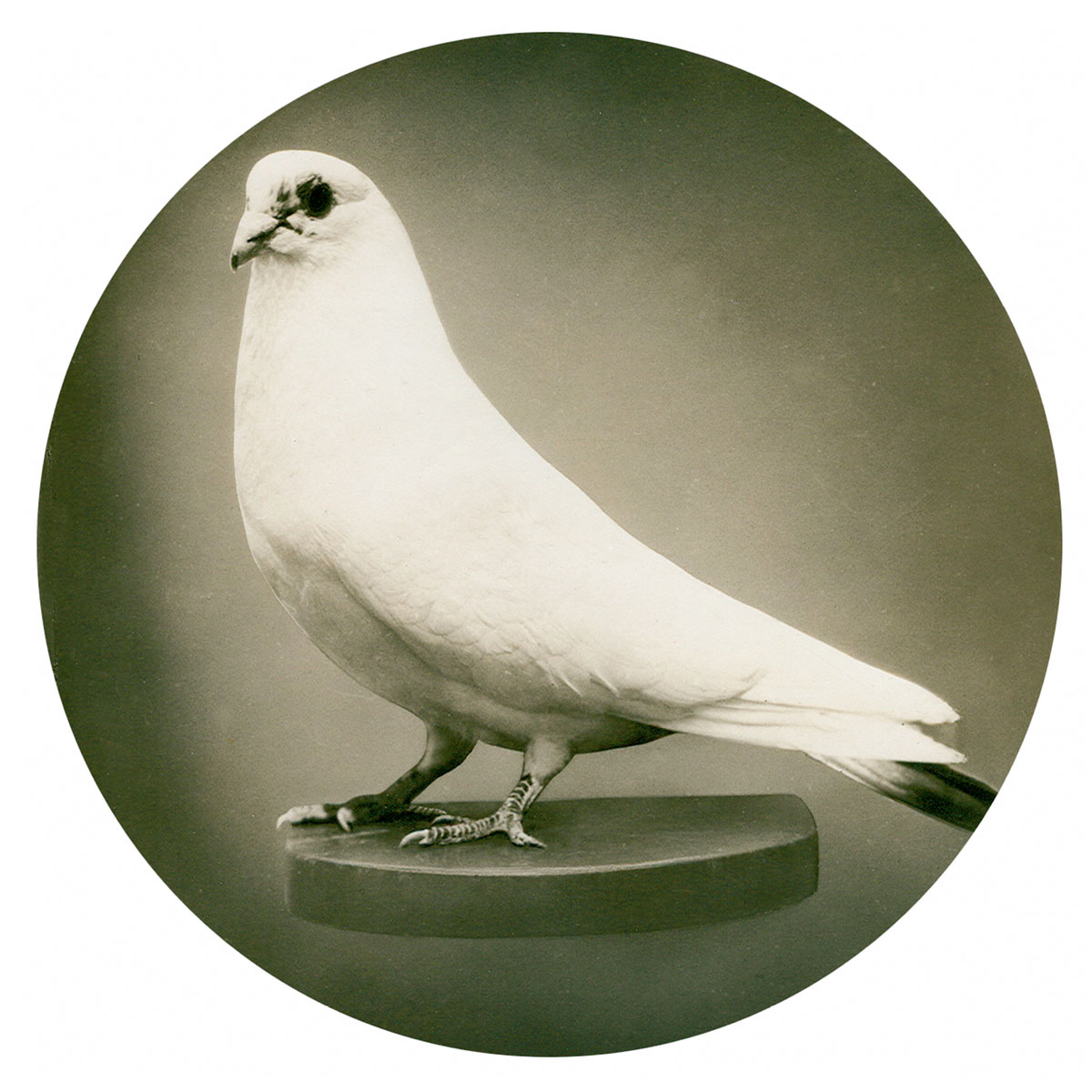Wings of Desire

Obscure object of desire. Although the fact that its subject perfectly matches the description of Tesla’s “beautiful bird” has led to claims that this photograph depicts the scientist’s beloved, it was in fact more likely one of a number of photos purchased by the inventor in 1938 to be used as part of a presentation outlining a mixture he had developed for a natural diet for the birds. Courtesy Nikola Tesla Museum, Belgrade.
Over the past twenty years or so, Nikola Tesla has become a folk-hero for the millennial tech-generation, who consider him the godfather of all visionary scientific mavericks, and thus a key precursor to their own “disruptive” aspirations. But during the twilight years of his life, Tesla was a much more withdrawn shadow of his former dynamic self, when he had been equal parts inventor and showman. At the end of the nineteenth century, during the battle for standardized electrical currents, Tesla found that his alternating current (AC) model put him in direct competition with his former boss, Thomas Edison, who favored direct current. Despite the fact that AC systems eventually emerged the winner, Edison’s standing continued to rise while Tesla was relegated to a footnote in history books, at least until the resuscitation of his reputation toward the end of the last century.
In 1934, near the end of Tesla’s working life, the Westinghouse Corporation—under whose sponsorship the inventor had conducted some of his most significant experiments with high-voltage generators, high-frequency communication, induction motors, radiography, and magnetic fields—agreed to pay his bills at the New Yorker hotel where he was staying in relative poverty. As his patents became less and less regular, and he turned to more reflective and speculative writings, the Serbian émigré would punctuate his day by walking to either the main branch of the New York Public Library, St. Patrick’s Cathedral, or Bryant Park in order to feed the pigeons. This habit, as it turned out, was more than a pleasant way to rest his rather restless mind. Indeed, this activity began to become more important to Tesla than his scientific meditations, or even his own official legacy (as his biographer at the time, John Jacob O’Neill, noted in some detail in a book entitled Prodigal Genius).
In one anecdote, Tesla goes missing during a prestigious event assembled in his honor in 1917: the award of the Edison Medal at the Electrical Engineers Club (which, as it happened, overlooked Bryant Park). Since 1915, rumors had been circulating that both Tesla and Edison had sabotaged their own chances to receive the Nobel Prize in Physics by refusing to share the honor (a rumor vigorously denied by the Nobel Committee, but which was taken as fact by contemporary commentators). Whether or not the rumors were true, Tesla was not thrilled about the prospect of receiving a medal bearing the name of his former boss and subsequent rival, but was eventually convinced to suffer the ceremony....MORE